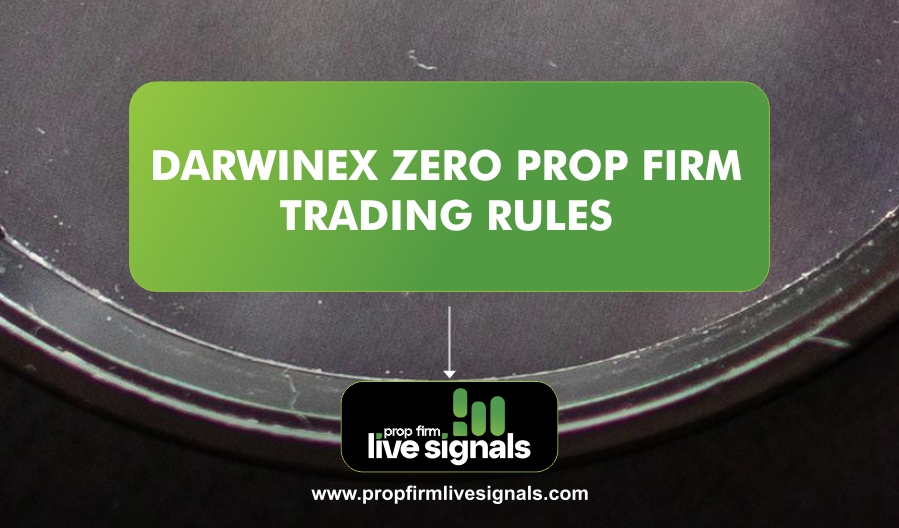These rules cover everything from risk management strategies, such as drawdown limits, to specific trading hours, leverage limits, and allowed instruments. By adhering to these rules, traders increase their chances of long-term success and avoid costly mistakes that could lead to disqualification or financial losses.
What Are Prop Firms?
Proprietary trading firms are companies that provide traders with capital to trade financial markets. In return, traders share a portion of their profits with the firm. These firms often have stringent rules to manage risk and ensure consistent profitability.
Understanding Trade The Pool
Trade The Pool is a proprietary trading firm that offers traders the chance to trade various financial instruments using the firm’s capital. Traders are expected to adhere to specific rules and guidelines to maintain their funded status and share in the profits.
Key Trading Rules of Trade The Pool
-
Profit Target
- Definition: The profit target is the amount a trader must achieve to become a funded trader. For instance, a trader might need to reach a profit of $4,200 to qualify.
- Importance: Meeting the profit target demonstrates a trader’s ability to generate consistent returns, aligning with the firm’s profitability goals.
-
Maximum Drawdown
- Definition: The maximum drawdown is the largest allowable loss from the peak to the trough of the trading account. Exceeding this limit can result in disqualification.
- Importance: This rule ensures that traders manage risk effectively, protecting both their capital and the firm’s investment.
-
Daily Loss Limit
- Definition: The daily loss limit is the maximum loss a trader can incur in a single day. For example, a daily loss limit might be set at $700.
- Importance: This limit prevents significant losses within a trading day, promoting disciplined trading practices.
-
Leverage
- Definition: Leverage allows traders to control a larger position with a smaller amount of capital. Trade The Pool offers various leverage options, such as $3,000, $12,000, $24,000, and $39,000.
- Importance: Proper leverage usage enables traders to maximize potential returns while managing risk appropriately.
-
Trading Hours
- Definition: Trading is permitted only during specific hours, typically aligning with major stock exchange operating times.
- Importance: Restricting trading hours ensures that trades are executed during optimal market conditions, reducing the risk of volatility.
-
Allowed Instruments
- Definition: Traders are permitted to trade a range of instruments, including stocks, ETFs, and commodities. However, certain instruments may be restricted.
- Importance: This rule ensures that traders focus on instruments they are familiar with, promoting better trading outcomes.
-
Position Sizing
- Definition: Position sizing refers to the amount of capital allocated to a single trade. Trade The Pool may set maximum position sizes to manage risk.
- Importance: Proper position sizing is crucial for effective risk management and capital preservation.
-
No Hedging
- Definition: Some prop firms, including Trade The Pool, may prohibit hedging strategies, where traders open positions that offset each other.
- Importance: This rule ensures that traders are fully committed to their trades, promoting active and decisive trading decisions.
-
Risk Per Trade
- Definition: The maximum risk per trade is the largest allowable loss on a single trade. For example, a trader might be allowed to risk up to $500 per trade.
- Importance: Setting a risk per trade limit helps in managing overall portfolio risk and prevents substantial losses from individual trades.
Benefits of Adhering to Trade The Pool’s Rules
- Consistent Profits: Following the rules promotes disciplined trading, leading to more consistent and sustainable profits.
- Avoiding Margin Calls: Adhering to risk management rules helps prevent margin calls, which can lead to account liquidation.
- Sustainable Trading Career: Maintaining discipline and following the firm’s rules contribute to a long-term successful trading career.
Common Challenges with Prop Firm Rules
- Strict Deadlines: The pressure to meet profit targets within set timeframes can be stressful for traders.
- Balancing Risk and Reward: Striking the right balance between taking risks and ensuring profitability can be challenging.
- Overtrading: The temptation to overtrade to meet targets can lead to significant losses.
How to Pass Trade The Pool’s Evaluation
- Understand the Rules: Thoroughly familiarize yourself with all the firm’s rules and guidelines.
- Develop a Trading Plan: Create a comprehensive trading plan that aligns with the firm’s requirements and your trading style.
- Practice Risk Management: Implement strict risk management strategies to protect your capital.
- Maintain Consistency: Focus on consistent, small gains rather than attempting large, risky trades.
Tips for Success in Prop Firms
- Stick to Your Plan: Develop a trading plan and adhere to it, avoiding impulsive decisions.
- Focus on Risk Management: Always implement stop-loss orders and manage position sizes to control risk.
- Continuous Learning: Stay updated with market trends and continuously improve your trading skills.
- Stay Disciplined: Maintain discipline by following the firm’s rules and your trading plan.
Conclusion
Understanding and adhering to the trading rules of Trade The Pool is crucial for aspiring traders seeking to leverage firm capital. By focusing on risk management, consistency, and discipline, traders can enhance their chances of success in the competitive world of proprietary trading.
Frequently Asked Questions
What is the maximum drawdown for Trade The Pool?
The maximum drawdown is typically set at three times the daily loss limit. For example, if the daily loss limit is $700, the maximum drawdown would be $2,100.
Can I use automated trading systems?
Trade The Pool may have specific policies regarding automated trading. It’s essential to review their terms and conditions for detailed information.
Is there a minimum time I need to be in profit before I can withdraw?
Withdrawal policies vary. Traders should consult the firm’s guidelines to understand withdrawal eligibility.
Are there any rules about trading during news events?
Some firms restrict trading during high-volatility news events to manage risk. It’s important to check Trade The Pool’s specific policies.
What happens if I break a rule?
Violating the firm’s rules can result in disqualification from the program and loss of capital.
Do I need to deposit money to join Trade The Pool?
Trade The Pool may require an initial deposit or fee to participate in their evaluation program. Details are available on their website.
How long does the evaluation process take?
The evaluation period typically lasts 45 days, but this can vary. Traders should refer to the firm’s terms for exact timelines.




